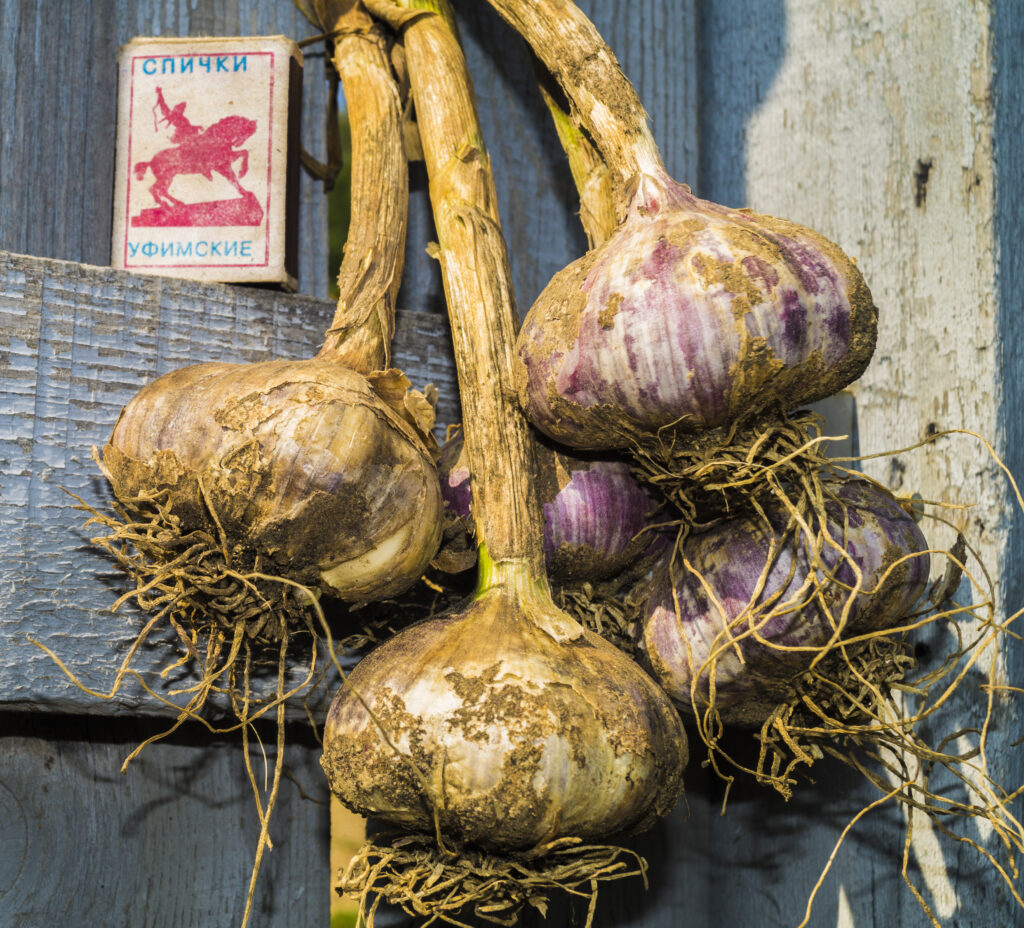


These statements have not been evaluated by the Food and Drug Administration. This product is not intended to diagnose, treat, cure, or prevent any disease.
“The antidiabetic effect of the extract was more effective than that observed with glibenclamide.
“Oral administrations of the garlic extract significantly decreased serum glucose, total cholesterol, triglycerides, urea, uric acid, creatinine, AST and ALT levels, while increased serum insulin in diabetic rats but not in normal rats (p<0.05). A comparison was made between the action of garlic extract and glibenclamide (600 microg/kg), the known antidiabetic drug. The antidiabetic effect of the extract was more effective than that observed with glibenclamide.” Click here for more.
“Garlic (Allium sativum) supplementation with standard antidiabetic agent provides better diabetic control in type 2 diabetes patients”
“Garlic has been used safely since ancient times as both food and medicine in human populations, but studies of its efficacy in the management of diabetes have yielded conflicting results. This study has evaluated the potential hypoglycemic effects of garlic in type 2 diabetic patients. The study was conducted in diagnosed type 2 diabetic patients (n=60) with fasting blood sugar level above 126 mg/dl to evaluate the effects of adding garlic tablets with standard antidiabetic therapy on blood sugar. Patients were divided randomly into 2 groups. Group 1 (n=30) was given tablet Garlic (KWAI) 300 mg thrice daily + Metformin 500 mg twice daily and Group 2 (n=30) was given Placebo+Metformin 500 mg twice daily respectively for 24 weeks. Serum lipids and fasting blood glucose were measured at week 0, 12 and week 24. Group1 showed significant reduction in fasting blood sugar at week 24 with a percentage decrease of (-3.12 percent) (P = <0.005) as compared to group 2 (0.59 percent). At the end of week 24, GR1 group also showed considerable decrease in mean total cholesterol (6.2 mg/dl, -2.82%, P=<0.005), LDL-C (-3 mg/dl, 2.18% P=<0.005), triglycerides (-5.2 mg/dl, 3.12%, P<0.005) while HDL cholesterol was significantly increased (2.36 mg/dl, 6.72%, P<0.005) as compared to GR2 group. Combination of garlic with typical antidiabetic remedy has shown to improve glycemic control in addition to antihyperlipidemic activity. Garlic may be a good addition in the management of patients with diabetes and hyperlipidemia.” Click here for more.
“Alliin obtained from leaf extract of garlic grown under in situ conditions possess higher therapeutic potency as analyzed in alloxan-induced diabetic rats”
“Alliin production noted ~50% enhancement in leaves from plants grown under in situ conditions. Serum glucose, triglycerides, total lipids, total cholesterol, low-density lipoprotein (LDL)-, and very low-density lipoprotein (VLDL)-cholesterol in diabetic rats treated with alliin produced from in situ grown plants noted significant reduction of ~54%, 15%, 14%, 20%, 24%, and 15%, while 35%, 14%, 10%, 12%, 17% and 11% reduction was noted in diabetic rats treated with alliin produced from ex situ grown plants in comparison with those administered with distilled water. High-density lipoprotein (HDL)-cholesterol did not show any significant change. Leaf extract of plants lowered serum enzyme levels (alkaline phosphatase, aspartate aminotransferase, and alanine aminotransferase) toward the norm better than glibenclamide. The histopathological alteration in pancreas caused by alloxan was also reduced by leaf extract.” Click here for more.
“Garlic reduces dementia and heart-disease risk”
“Risk factors for cardiovascular disease, including high cholesterol, high homocysteine, hypertension and inflammation, increase the risk of dementia, including its most common form, Alzheimer’s disease (AD). High cholesterol is also associated with elevated beta-amyloid (Abeta), the hallmark of AD. Oxidative damage is a major factor in cardiovascular disease and dementia, diseases whose risk increases with age. Garlic, extracted and aged to form antioxidant-rich aged garlic extract (AGE or Kyolic), may help reduce the risk of these diseases. AGE scavenges oxidants, increases superoxide dismutase, catalase, glutathione peroxidase, and glutathione levels, and inhibits lipid peroxidation and inflammatory prostaglandins. AGE reduces cholesterol synthesis by inhibiting 3-hydroxy-3-methylglutaryl-CoA reductase and is additive with statins in its action. Inhibition of cholesterol, LDL oxidation, and platelet aggregation by AGE, inhibits arterial plaque formation; AGE decreases homocysteine, lowers blood pressure, and increases microcirculation, which is important in diabetes, where microvascular changes increase heart disease and dementia risks. AGE also may help prevent cognitive decline by protecting neurons from Abeta neurotoxicity and apoptosis, thereby preventing ischemia- or reperfusion-related neuronal death and improving learning and memory retention. Although additional observations are warranted in humans, compelling evidence supports the beneficial health effects attributed to AGE in helping prevent cardiovascular and cerebrovascular diseases and lowering the risk of dementia and AD.” Click here for more.
“Protective action on human LDL against oxidation and glycation by four organosulfur compounds derived from garlic”
“Human LDL were used to study the protective action of four organosulfur compounds (diallyl sulfide, DAS; diallyl disulfide, DADS; S-ethylcysteine, SEC; N-acetylcysteine, NAC) derived from garlic against oxidation and glycation. The four organosulfur compounds significantly inhibited superoxide production by xanthine-xanthine oxidase (P < 0.05) and showed marked copper-chelating capability. DAS and DADS exhibited greater antioxidant activities against copper- and amphotericin B-induced LDL oxidation (P < 0.05) than SEC and NAC. However, SEC and NAC were more effective in sparing LDL alpha-tocopherol (P < 0.05). When oxidation was minimized, SEC was the most powerful agent against LDL glycation (P < 0.05); however, DADS was superior to other agents in suppressing both oxidation and glycation when LDL oxidation occurred simultaneously with glycation. These results suggest that the four organosulfur compounds derived from garlic are potent agents for protecting LDL against oxidation and glycation, and that they may benefit patients with diabetes mellitus or cardiovascular diseases by preventing complications.” Click here for more.
“Effects of allicin on hyperhomocysteinemia-induced experimental vascular endothelial dysfunction”
“This study was designed to investigate the effect and mechanism of allicin on hyperhomocysteinemia-induced experimental vascular endothelial dysfunction in rats. Fifty male Wistar rats were randomly divided into five groups: the normal control rats (NC), the high-methionine-diet rats (Met), the high-methionine-diet rats treated with folic acid, vitaminB₆ and vitaminB₁₂ (Met+F), or with low-dose allicin (Met+L), or with high-dose allicin (Met+H). After 6 weeks, we collected blood samples of all groups to determine plasma endothelin (ET), serum homocysteine (Hcy), nitric oxide (NO), superoxide dismutase (SOD), malondialdehyde (MDA), and detected the expression of basic fibroblast growth factors (bFGF), transforming growth factor beta (TGF-β), tumor necrosis factor-alpha (TNF-α), and intercellular adhesion molecule-1 (ICAM-1) in the aorta. The Hcy and the expression of TGF-β in both the Met+L and Met+H groups were significantly lower than the Met and Met+F groups. The ET, ET/NO ratio and the MDA levels of the Met+L and Met+H groups were significantly lower than the Met group. The SOD and NO levels and the expression of bFGF, TNF-α and ICAM-1 of the Met+L and Met+H groups were significantly higher than the Met group. Our data indicate that allicin inhibits lipid peroxidation induced by hyperhomocysteinemia and regulates the excretion and equilibrium of ET and NO, and suggest that allicin might be useful in the prevention of endothelial dysfunction caused by hyperhomocysteinemia.” Click here for more.
“Attenuation of streptozotocin-induced oxidative stress in hepatic and intestinal tissues of Wistar rat by methanolic-garlic extract”
“Diabetes is a major socio-economical burden with serious health consequences. The reactive oxygen species generated in this pathology alters the internal milieu of the cellular systems paving way to metabolic disorders. In the present investigation garlic’s dose-dependent protective action against streptozotocin (STZ)-induced oxidative stress in hepatic and intestinal tissues has been studied. Methanolic garlic extract scavenged the DPPH radical with an IC(50) of 424 +/- 4.4 microg/ml proving its efficient antioxidant property. Garlic administration at 250 and 500 mg/kg body wt. significantly normalized the blood glucose in the diabetic rats. Biochemical analysis revealed a pronounced oxidative stress in STZ-rats (G-II) consequent to hyperglycemia as seen by a significant (P < 0.05 and 0.01) rise in malondialdehyde, protein carbonyls; accumulation of glycation products; disintegration of protein integrity (tryptophan fluorescence) followed by a decrease in reduced glutathione, antioxidant (GPx and CAT) enzymes culminating in apoptosis. Garlic administration in a dose-dependent manner has been found to restore and normalize significantly the above changes and thus restoring a normal functional integrity. These beneficial effects are prominent with 500 mg/kg body wt. dosage of garlic in comparison with 250 mg/kg body wt. dosage. But, 500 mg/kg body wt. dosage is not totally free from side effects as the decrease in body weight and increased intestinal tissue apoptosis were also found in control rats administered with garlic extract at 500 mg/kg body wt. along with diabetic rats. Based on these findings it is suggested that consumption of garlic at a lower dose is beneficial in terms of defensive action against oxidative stress.” Click here for more.
“The antiatherogenic effect of allicin: possible mode of action”
“By using a pure allicin preparation, we were able to show that allicin may affect atherosclerosis not only by acting as an antioxidant, but also by other mechanisms, such as lipoprotein modification and inhibition of LDL uptake and degradation by macrophages.” Click here for more.